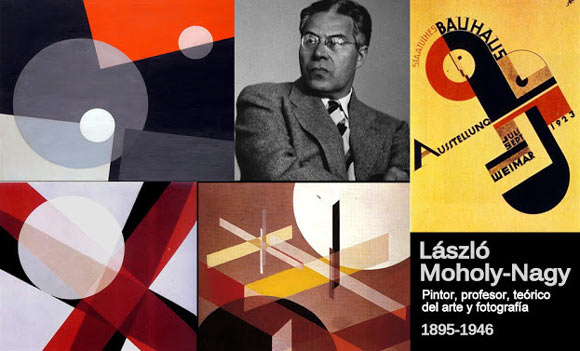
László Moholy-Nagy was an eminent twentieth century Hungarian artist. He excelled in painting and photography and also worked as a teacher. His style is highly inspired by the artistic philosophy of constructivism which dictates that art must serve a social purpose and not remain autonomous. Moreover, he emphasized the idea of integration of modern technology into arts.
On July 20, 1895, in Hungary, Moholy-Nagy was born to a Jewish-Hungarian family and was named László Weisz. He later changed his surname to Nagy, after his father left the family and his mother’s friend Nagy helped raised them. A part of his boyhood was spent in a Hungarian town Ada. Growing up he converted to Calvinism in the Hungarian Reformed Church. He received his early education from an academic high school, Gymnasium based in Szeged. At the advent of World War I, he went on to study law in Budapest. Soon after, he suffered a severe injury while serving in the war. Returning from war during the period of his convalescence, he found himself involved in arts. He became familiar with the journal Jelenkor (The Present Age) and with an activist circle associated with another journal Ma (Today). In 1918, upon his discharge from the army, he enrolled himself at a private art school ran by the Hungarian Fauve artist Róbert Berény. As the Communist Regime was defeated, he returned to Szeged and subsequent to exhibiting his work there, he moved to Vienna and then to Berlin.
Moholy-Nagy took up the position as an instructor of the foundation course at the Bauhaus school, in 1923. Henceforth, the expressionistic teaching came to a halt and focused on the central aim of the school that is design and industrial integration. The school was known for the versatility of its artist which included Moholy-Nagy’s creative genius. He was recognized for his life-long effort and proficiency in a variety of fields including photography, typography, industrial design, painting, sculpture and printmaking. However, photography remained his forte. According to his belief known as “the New Vision”, photography is the means of capturing reality in a whole new spectrum that is not entirely possible for human eye. His teaching had a profound influence on his students who seek to explore the endless wonder of art in its various forms.
In addition to this, he penned down a book, titled The New Vision, from Material to Architecture, which largely covered his theories on art and teaching. Moholy-Nagy experimented with photogram, a kind of photographic image that is produced without using a camera but by exposing light to the objects placed directly onto the surface of a light-sensitive photographic paper. His construction of ‘Lichtrequisit einer elektrischen Bühne’ is deemed his most enduring achievement. Light Prop for an Electric Stage is a device that aims to create shadows on nearby surfaces by projecting light through moving objects. It is often interpreted as a kinetic sculpture which Moholy-Nagy created in collaboration with a Hungarian architect for the German Werkbund exhibition. Posthumously, the device came to be known as Light-Space Modulator. From 1927 to 1929, he worked for the avant-garde Dutch magazine International Revue as photography editor. Subsequent to resigning from Bauhaus late 1920s, he came highly recommended as a designer in Berlin.
Moholy-Nagy moved to England as Nazis came to power and worked a number of jobs from teaching to commercial photography. He was invited to US to hold the position of director of New Bahaus and remained in Chicago till the end of his days. In 1946, László Moholy-Nagy died of leukemia.

